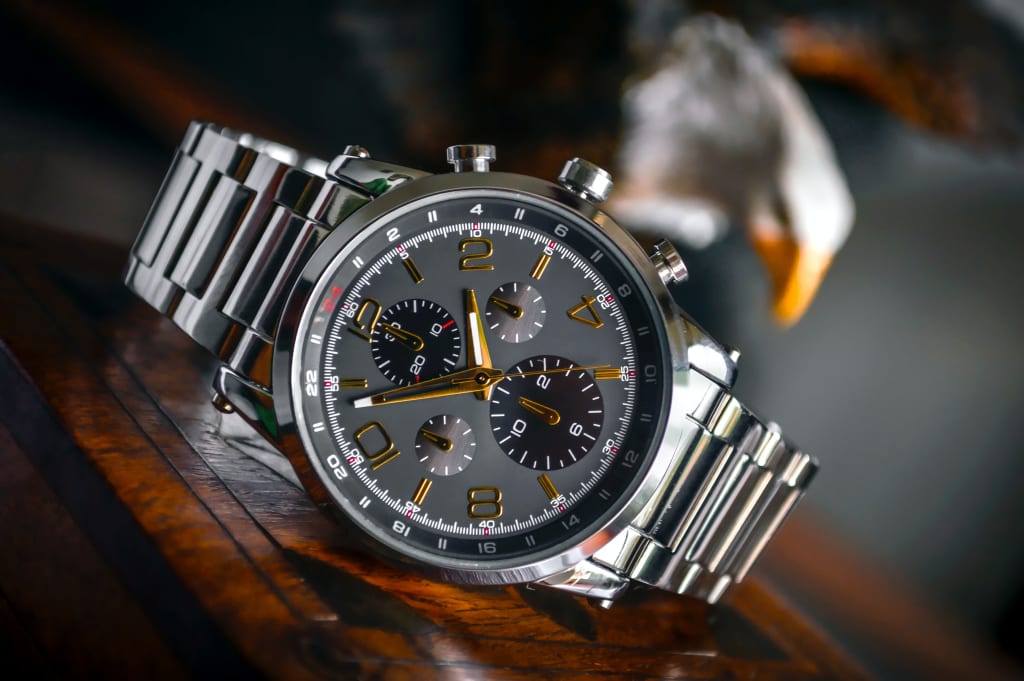
I. Introduction
Definition of watch: A watch is a timepiece that is worn on the wrist or carried as a pocket watch. It is used to measure and keep track of time.
Brief history of the development of watches: The earliest known watches were portable spring-driven clocks, which first appeared in the 15th century. The first wristwatches appeared in the late 19th century, but it wasn't until the 20th century that wristwatches became widely popular. Today, watches come in a wide variety of styles, designs and technologies, from traditional mechanical watches to modern smartwatches.
II. Characteristics of watches
Types of watches: There are several types of watches, including mechanical watches, quartz watches, automatic watches, and smartwatches.
Mechanical vs. quartz watches: Mechanical watches are powered by a spring and rely on the movement of gears and wheels to keep time. Quartz watches, on the other hand, use a quartz crystal to keep time, which is more accurate and requires less maintenance than mechanical watches.
Features of modern watches: Modern watches come with a wide range of features, including chronograph, alarms, timers, and water resistance. Many modern watches also have additional features such as GPS, fitness tracking, and mobile connectivity.
III. Uses of watches
Timekeeping: The primary use of a watch is to measure and keep track of time.
Fashion and style: Watches are also worn as a fashion accessory and can be used to reflect personal style and status.
Sports and fitness tracking: Some watches come equipped with features for tracking fitness and sports activities, such as heart rate monitoring and step tracking.
Navigation and location services: Some watches also come equipped with GPS and other location-based services, such as maps and compass.
Smartwatch functions: Smartwatches have additional features such as mobile connectivity, voice commands, and the ability to run third-party apps.
IV. Impact of watches on society
Positive impacts: Watches have made it easier for people to keep track of time and have become an important tool for managing and organizing activities. They also serve as a fashion statement and status symbol.
Negative impacts: Over-reliance on watches can lead to people becoming overly focused on time, and may lead to feelings of stress and anxiety.
V. Conclusion
Advancements and future developments in watch technology: Watch technology continues to evolve with new features such as advanced fitness tracking, mobile connectivity, and virtual and augmented reality.
The role of watches in shaping the way we measure and keep track of time: Watches have become an integral part of our daily lives and have played an important role in shaping the way we measure and keep track of time.
Watches have a wide range of uses, some of the most common uses include:
Timekeeping: The primary use of a watch is to measure and keep track of time.
Fashion and style: Watches are also worn as a fashion accessory and can be used to reflect personal style and status.
Sports and fitness tracking: Some watches come equipped with features for tracking fitness and sports activities, such as heart rate monitoring, step tracking, and activity tracking.
Navigation and location services: Some watches also come equipped with GPS and other location-based services, such as maps and compass.
Smartwatch functions: Smartwatches have additional features such as mobile connectivity, voice commands, and the ability to run third-party apps.
Chronograph: Some watches come with a chronograph function, which is a stopwatch that allows the user to measure elapsed time.
Alarm: Many watches come with an alarm function, which can be used to set alarms and reminders.
Timer: Some watches come with a timer function, which can be used to time events or activities.
Water resistance: Many watches come with a water-resistant design, which allows them to be worn while swimming or doing other water-based activities.
Health and wellness tracking: Smartwatches come with various health and wellness tracking features such as heart rate monitoring, sleep tracking, stress monitoring.
Mobile payments: Some smartwatches come with mobile payment features, allowing users to make payments using their watch.
Gaming: Some smartwatches come with basic gaming features, allowing users to play games on their watches.
These are some of the most common uses of watches, but the possibilities are endless as new technologies and features continue to emerge.






Comments
There are no comments for this story
Be the first to respond and start the conversation.